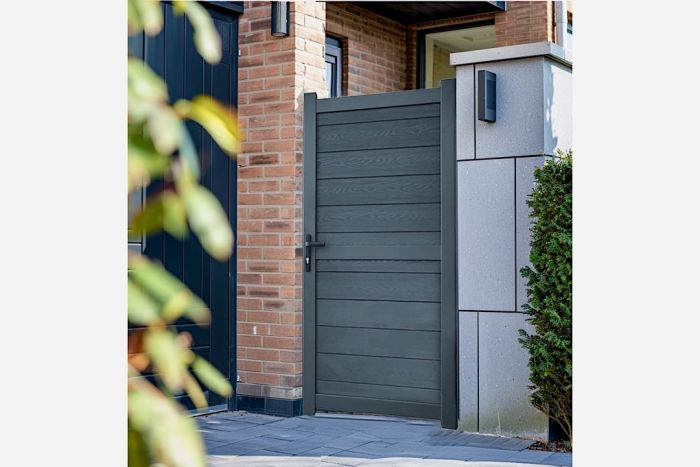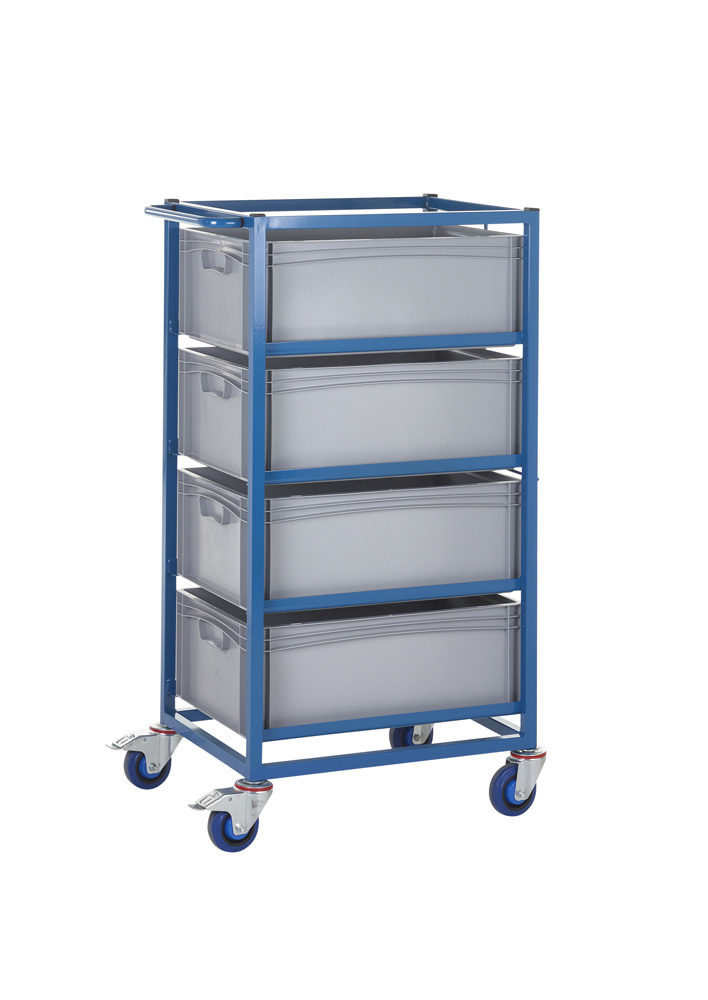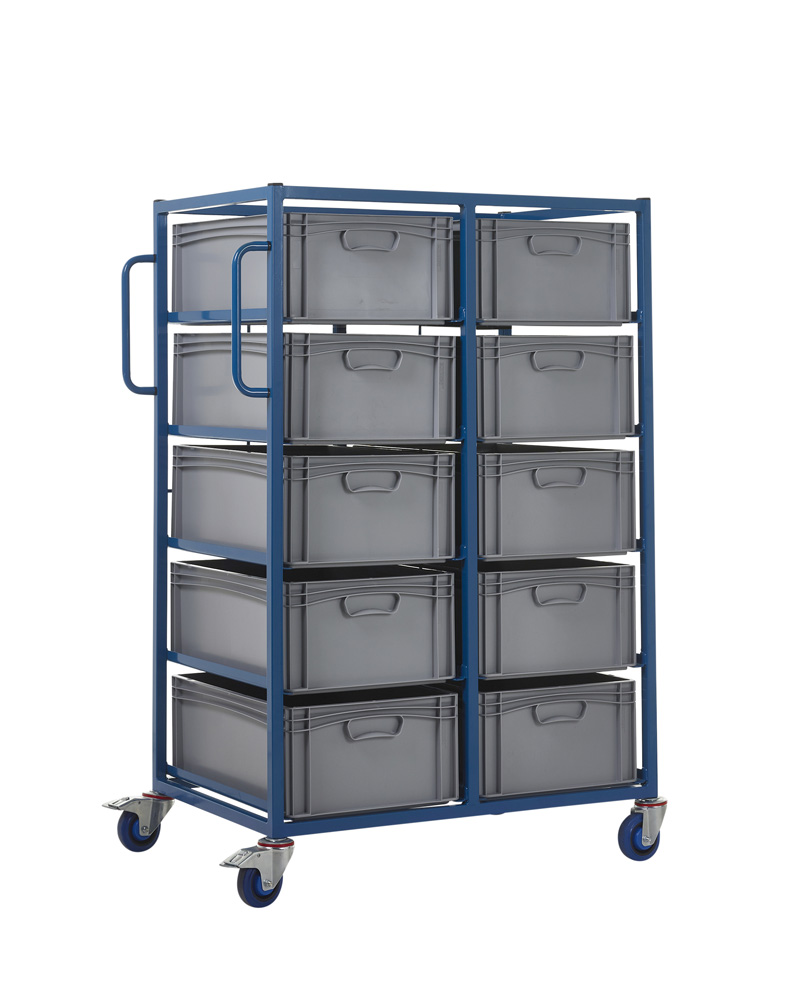Secure, stylish composite garden gate enhances privacy and curb appeal
The RMG002PGC Composite Garden Gate offers a modern and secure solution for any home. Featuring a durable aluminium frame and a full-privacy composite horizontal infill, this gate combines elegance with low maintenance and long-lasting performance.
Key Features:
- Full Privacy: Solid WPC composite infill provides complete privacy for your yard.
- Durable Construction: Strong aluminium frame combined with weather-resistant composite infill ensures long-lasting performance.
- Low Maintenance: No painting, staining, or oiling required. Simply wash with soapy water.
- Easy Installation: Supplied fully assembled for easy installation. Universal opening direction (left or right, inward or outward).
- Stylish Design: Flat top design with a contemporary aesthetic complements any home.
- Colour Options: Available in Jet Black (RAL 9005) and Anthracite Grey (RAL 7016).
- Complete Package: Includes 2 adjustable wall-mounted hinges, 1 floor-mounted hinge, 2 gate handles, 1 euro barrel lock with 3 keys, and a full-length lock keep.
- Various Sizes: Available in widths from 800mm to 1200mm and a standard height of 1800mm. (See sizing guide below for overall width and height requirements.)
- 5-Year Guarantee: Backed by a five-year manufacturer’s guarantee.
- Eco-Friendly Materials: Infinitely recyclable aluminium and sustainable composite materials.
How to Choose the Right Composite Gate Size:
Choose from a range of standard sizes, or opt for our custom width reduction service if you need a specific fit. Find out more about custom sizes in our “How to Choose the Right Composite Gate Size” Guide.
Step 1: Decide How You Want to Hang the Gate
Consider the different hanging options:
- Between Existing Structures (Wall-to-Wall, Wall-to-Existing Post, Existing Post-to-Post): Ideal if you have two existing walls or posts already in place, and you want to fit the gate directly between them.
- Wall and New Aluminium Post (100mm/150mm): You'll attach a new aluminium post to a wall, and the gate will hang between the wall and this post. Choose the post width (100mm or 150mm) based on your needs and available space.
- Between Two New AluminIum Posts (150mm): You'll install two new 150mm wide aluminIum posts, and the gate will hang between them.
- Between Two New Posts (Other Materials): You'll install two new posts (made of a material other than aluminIum), and the gate will hang between them.
- Using Aluminium Surface Posts: These posts are designed to be bolted directly onto a solid, flat surface (like concrete). The gate will then hang from these surface-mounted posts.
Step 2: Measure the Opening Width
Use a tape measure to determine the exact width of the opening you want to fill with the gate. Measure between the points where the gate will be attached (walls, posts, etc.). Make sure to measure in a straight line.
Step 3: Account for Hinges and Posts (Standard Sizes - Width)
- Important Note: While the hinge allowance can range from 25mm to 35mm, the preferred allowance is 30mm. Use 30mm in your calculations unless you have specific reasons to deviate.
- Between Existing Structures: To determine the maximum gate width that will fit, subtract the hinge allowance from your opening width. Example: Your opening width is 1030mm. 1030mm - 30mm = 1000mm. Since your maximum gate width is 1000mm, and you offer a 1000mm gate, that is the size you should choose.
- Wall and New Aluminium Post (100mm): To determine the maximum gate width that will fit, subtract the appropriate allowance from your opening width. Example: Your opening width is 1030mm. 1030mm - 130mm = 900mm. Since your maximum gate width is 900mm, and you offer an 900mm gate, that is the size you should choose..
- Between Two New Aluminium Posts (150mm): o determine the maximum gate width that will fit, subtract the appropriate allowance from your opening width. Example: Your opening width is 1130mm. 1130mm - 330mm = 800mm. Since your maximum gate width is 800mm, and you offer an 800mm gate, that is the size you should choose.
- Between Two New Posts (Other Materials): To determine the maximum gate width that will fit, subtract the appropriate allowance from your opening width. Example: Your opening width is 1030mm. 1030mm - 30mm = 1000mm. Since your maximum gate width is 1000mm, and you offer a 1000mm gate, that is the size you should choose.
- Using Aluminium Surface Posts: To determine the maximum gate width that will fit, subtract the appropriate allowance from your opening width. Example: Your opening width is 1030mm. 1030mm - 120mm = 910mm. Since your maximum gate width is 910mm, and you offer a 900mm gate, that is the size you should choose.
Step 4: Measure the Opening Height
Use a tape measure to determine the exact height of the opening you want to fill with the gate. Important: Measure from the finished ground level to the top of where the gate will be hung.
Step 5: Account for Hinges (Height)
- To ensure proper clearance and operation, you need to add extra height to your opening measurement to accommodate the hinges. A minimum of 50mm is required at both the top and bottom of the gate. Therefore, add a total of 100mm to your measured opening height.
- Example: Your measured opening height is 1900mm. Add 100mm for hinges: 1900mm + 100mm = 2000mm. This is your required opening height.
Step 6: Check Standard Gate Size Options
Look at the available standard gate size options to see if there is a size that fits the opening width and height (after accounting for hinges and/or posts) exactly. If there is, you do not need to order a custom size gate.
Step 7: Calculate Custom Gate Size (If Needed)
If none of the standard sizes fit perfectly, calculate a custom size:
- (1) Take the measured opening width from Step 2. In this example, your opening width is 1210mm
- (2) Crucially: Confirm that your opening width is at least the desired gate width plus the hinge allowance. (Remember, the preferred hinge allowance is 30mm total.)
- (3) Example: Let's say your opening width is 1210mm, and you are mounting between existing structures. You want to determine the maximum standard gate size that will fit.
- (4) Subtract the hinge allowance from your opening width to determine the maximum gate width: 1210mm - 30mm = 1180mm.
- (5) Select the standard gate size that is closest to, but not greater than, your calculated maximum gate width (1180mm in this example). So, you would choose the 1200mm gate width, as this is the next size up from the 1180mm maximum.
- (6) Specify the exact width you need in millimetres (e.g., 1180mm in this example) in the “Special delivery, access, or unloading requirements” box during checkout. (You are ordering a 1200mm gate, but specifying that you need it cut down to 1180mm wide.)
Step 8: Select Gate Size
-
Standard Size: If a standard size fits, choose that.
-
Custom Size: If you need a custom size, choose the next size up from the width you calculated (Step 7). After choosing the custom size, specify the exact width you need in millimetres in the “Special delivery, access, or unloading requirements” box during checkout. If you forget this step, call our support team for assistance at 01279 933019 (Mon-Fri, 09:00 - 16:45, excluding bank holidays).
Important Notes:
-
Listed gate widths are actual gate widths. Do not add the width allowance to the listed width.
-
These are just examples. Use your measured opening width in the calculations.
-
The width allowance ranges (e.g., 25-35mm, 125-135mm, etc.) are due to variations in hinge placement, post sizes, or other installation factors. If you're unsure which value in the range to use, consult the installation guide or contact the supplier.
-
The final gate size you choose (standard or custom) should be the closest size that is not greater than your calculated required gate width.
-
Remember to consider the type of ground surface you will be fixing the posts to when calculating post lengths and fixings.
-
Lead times can be longer, on some requirements this can add an extra 4 to 5 weeks.




















 FREE DELIVERY WITHIN GREAT BRITAIN
FREE DELIVERY WITHIN GREAT BRITAIN 


































